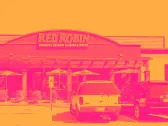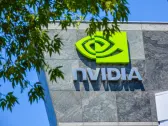A Troubling Six-Month Stretch for Red Robin’s Shareholders
Over the last six months, Red Robin’s shares have plummeted to $5.93, resulting in a disappointing 9.3% loss – a stark contrast to the S&P 500’s 7.3% gain. This decline was partly driven by its softer quarterly results and has left investors wondering how to approach the situation.
Is Now the Time to Buy Red Robin, or Should You Be Cautious?
As we delve into our analysis, it becomes clear that Red Robin’s current state may not be as attractive as it seems. In this article, we’ll explore three reasons why you should exercise caution when considering adding RRGB to your portfolio.
A Comprehensive Research Report: Get Our Analysts’ Expert Opinion
Dive into our full research report to gain a deeper understanding of Red Robin’s current situation and our team’s expert opinion on its future prospects. This in-depth analysis is available for free, providing you with the insights you need to make informed investment decisions.
We’re Swiping Left on Red Robin: Three Reasons Why You Should Be Cautious
Despite its lower entry price, we advise against investing in Red Robin for now. Here are three compelling reasons why:
1. Flat Same-Store Sales Indicate Weak Demand
Same-store sales are a critical performance indicator, measuring organic growth within existing dining locations. Unfortunately, Red Robin’s demand has barely increased over the last two years, with its same-store sales remaining flat.
Red Robin Same-Store Sales Growth: A Troubling Trend
| Period | Same-Store Sales Growth |
| — | — |
| 2020 | -1.2% |
| 2021 | 1.5% |
| 2022 | -0.8% |
2. EPS Trending Down: A Profits Warning Sign
We track the long-term change in earnings per share (EPS) to gauge a company’s growth and profitability. Sadly for Red Robin, its EPS declined by 33.2% annually over the last five years while its revenue remained flat. This indicates that the company struggled due to its fixed cost base, which made it challenging to adjust to choppy demand.
Red Robin Trailing 12-Month EPS (Non-GAAP): A Profitability Conundrum
| Period | EPS (Non-GAAP) |
| — | — |
| 2018 | $1.64 |
| 2019 | $1.23 |
| 2020 | $0.85 |
| 2021 | $1.02 |
| 2022 | $0.68 |
3. High Debt Levels Increase Risk: A Recipe for Disaster
Debt can be a valuable tool, but excessive use can lead to insolvency. Red Robin’s $585.5 million of debt exceeds its cash position by a significant margin ($21.99 million). Moreover, its 15× net-debt-to-EBITDA ratio (based on EBITDA of $36.73 million over the last 12 months) indicates that the company is overleveraged.
Red Robin Net Cash Position: A Risky Situation
| Item | Value |
| — | — |
| Total Debt | $585.5M |
| Cash & Short-Term Investments | $21.99M |
At this level of debt, incremental borrowing becomes increasingly expensive, and credit agencies could downgrade the company’s rating if profitability falls. Red Robin may also be backed into a corner if the market turns unexpectedly – a situation we seek to avoid as investors in high-quality companies.
Final Judgment: A Cautionary Tale
We believe that companies helping consumers are valuable assets. However, in the case of Red Robin, we’re out. Following the recent decline, the stock trades at 1.6× forward EV-to-EBITDA (or $5.93 per share). While this valuation is optically cheap, the potential downside is significant given its shaky fundamentals.
Stocks We Would Buy Instead of Red Robin
The elections are now behind us. With rates dropping and inflation cooling, many analysts expect a breakout market to cap off the year – and we’re zeroing in on the stocks that could benefit immensely.
Top 5 Strong Momentum Stocks for this Week
Take advantage of the rebound by checking out our curated list of High Quality stocks that have generated a market-beating return of 175% over the last five years. This includes:
- Nvidia: +2,691% between September 2019 and September 2024
- United Rentals: +550% five-year return
Find your next big winner with StockStory today for free.
Conclusion: A Call to Action
As we conclude our analysis of Red Robin’s current state, it becomes clear that caution is warranted. With its flat same-store sales, declining EPS, and high debt levels, the company presents a riskier investment proposition than initially meets the eye.
If you’re looking for exciting stocks to buy, consider Wingstop, a fast-growing restaurant franchise with an A+ ranch dressing sauce. Alternatively, explore our Top 5 Strong Momentum Stocks for this week, featuring High Quality companies that have generated impressive returns over the last five years.
Informed investment decisions require thorough analysis and expert opinion. Get our analysts’ expert insights by downloading our comprehensive research report today.




